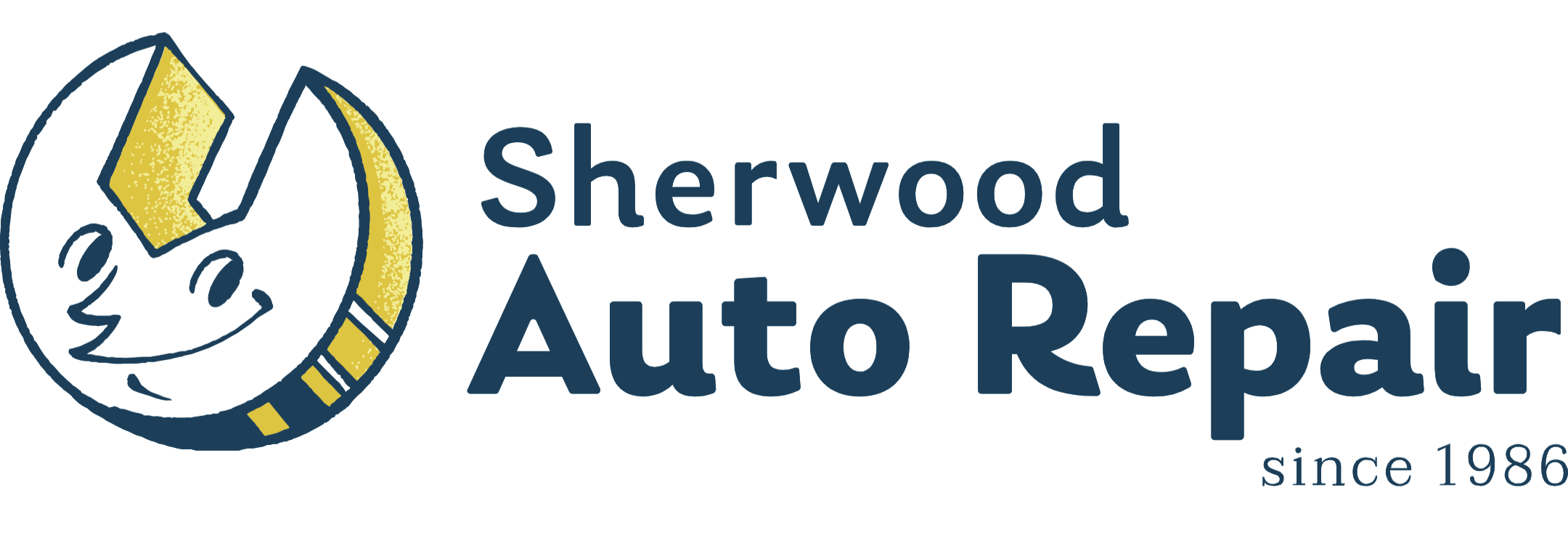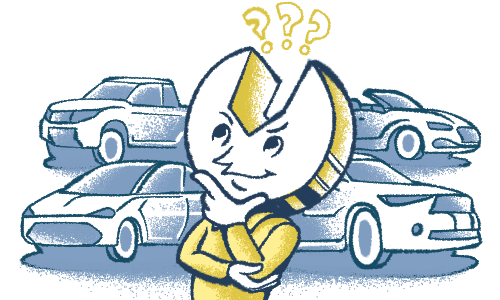
Guide
A simple guide to buying a used car.
Looking for a used car? We have tips from finding value, to asking the right questions, to what to do and consider on a test drive, and finally the maintenance we recommend to ensure a long life for that used car. Buckle up. We have a lot of ground to cover.
What should you do before buying?
Establish your car goals:
The very first questions to consider are what will the car be used for and who will be driving it. Let’s take a look at some common types of drivers:
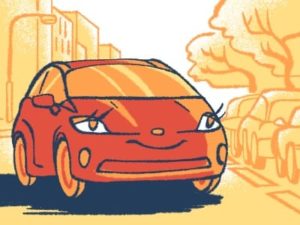 The commuter
The commuter
Anna is a suburbanite who works in the city so she spends a good amount of time on the highway in her car, often stuck in traffic.
“I need a car that won’t leave me stranded on the side of the highway, but also has some features and amenities to make my drive more pleasant.”

Otto's recommended vehicles:
hybrid, sedan, hatchback
 The vacationer
The vacationer
Jackson loves to hit the road on weekends and spends his time off exploring towns, sites, and attractions away from home.
“I live in the Pacific Northwest and love wine, so if I can use my days off to cruise to hip towns while listening to some great tunes, call me happy.”

Otto's recommended vehicles:
hybrid, coupe, convertible
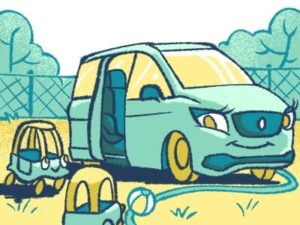 A family with kids
A family with kids
The Sharp family spends the summer shuffling their three kids to various camps, the local pool, and to playdates.
“It feels like we’re always running around town with a car full of kids and their gear. We want to safely get our kids from point A to point B.”

Otto's recommended vehicles:
mini-van, SUV, wagon
 The off road adventurers
The off road adventurers
Paul’s daughter and her friends like to take his car on adventurous weekends. They drive off road to get to the beach, hit the less-popular hiking spots, and pack the kayaks for a day of paddling.
“I like to hit the backroads too, and love to tow my boat to a lake for a day of fishing, but now that Jen drives, I rarely have a vehicle to do that.”

Otto's recommended vehicles:
crossover, SUV, pickup
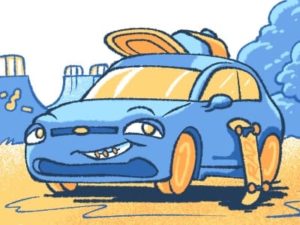 A teen
A teen
Ryan is a new driver who wants to enjoy the freedom of the road. His parents worry about his safety, not to mention how often they give up their keys.
“I love to drive my friends around town and not have to rely on my parents to take me everywhere, I hate having to share a car with them. They always need it when I want to hit the skatepark.”

Otto's recommended vehicles:
hatchback, sedan
The used car search
Now that you’ve identified the type of driver and matching car for your used car purchase, it’s time to start looking at cars. In the search itself you should of course look at price, but also consider the mileage of the car, the year, and what make and model really fits your needs. Lower miles and a newer car are ideal, but not always affordable. Also see if there’s a warranty and make sure there have been no recalls.
There are three basic options when searching and buying cars: visiting a car dealer, searching online through a service such as CarMax or Carvana, or searching for cars from an individual off a platform like CraigsList or a newspaper ad. I guess you could also buy from a friend but be aware of the common refrain that it isn’t wise to do business with friends.
Here’s a quick look at the main differences:
| | Dealer | Online | Private sale |
|---|---|---|---|
| Loans Available | | | |
| Short turnaround | | | |
| Discounts | | | |
| Price negotiation | | | |
| Test drive | | | |
| Same day delivery | | |
What should you do when looking at the car?
When you have a car identified, there are steps to take to make sure it’s safe, reliable, and mostly undamaged.
Questions to ask the seller of a used car
No matter where you’re buying your car, there are questions to ask upfront to make sure you aren’t getting taken for a ride.
- Who maintained the car—a dealer, independent mechanic, or cousin who tinkers with cars? Do you have service records?
- Has the car ever been in an accident, what features may not work as intended, and would you take a trip down to Mexico tomorrow in this car.
- Has the car ever been owned by anyone else? Can I find it on CarFax?
- Do you have the title?
- Why are you selling the car?
- The questions to this point are the “getting to know you” questions. If the car is still appealing, it’s time to pile on the more critical stuff.
- How did you arrive at this asking price and is it negotiable?
- Can I have my mechanic take a look at the car?
What to do on a test drive
With questions answered, the next step is to do a test drive. Ideally, you’ll be able to take the car out without a salesperson. If that’s not possible, don’t use the time with the salesperson to ask more questions because you’ll want to focus on the sounds, feel, and handling of the car, not a sales pitch. Request an extended route so you can see how it runs on backroads and highways.
During a test drive listen for and be aware of:
- Do the brakes squeak?
- Are there odd rattles?
- Does the car pull in a certain direction?
- Does the wind whistle when the windows are rolled up?
- Does it run fine in a neighborhood, but strain on the highway?
Any of these can be warning signs to a bigger problem and should prompt further questions and investigation.
Inspecting a used car
When the test drive is over, leave the car idling as you inspect so you can get a better look at how things run and look for signs of overheating.
Exterior
- In a well-lit area, look for dents, dings, mismatched paint, rust and more.
- Check the tailpipe for signs of excessive rust and to see if it’s dark gray and dry like it should be or if it looks greasy.
Interior
- Sit in the car and turn every knob, push every button, check out the various compartments.
Look up and see if there are any stains on the ceiling or around the door that could indicate leaks and do the same looking down at the carpet. - Turn on the lights, the stereo, the AC, and heat to make sure they all work.
- Use your nose and see if the air coming out of the vents is accompanied by some unpleasant smell.
Under the hood
- Visually inspect hoses and connections for cracks and fraying.
- Look at fluid levels and colors. Oil should be amber, coolant should be green.
- Check the battery to see if it has a charge indicator light to tell you the level of charge.
- Look around the engine and spot any streaks or oil.
Under the car
- Look for puddles . A car will leave a puddle from AC, but nothing else should be leaking. If the puddle is green, red, or oily consider it a red flag.
- Look at the tires for signs of wear. Tires should last at least 20,000 miles.
Take the car to your mechanic
- If you’re not confident in your ability to spot problems, ask if you can take the car to your mechanic for an inspection before you buy. This is not always possible, but bringing in someone with experience can put your mind at ease.
Negotiating a price
Not all car prices are negotiable but find out if yours is. Whether it is or not, ask how the seller landed on his asking price. At the very least the seller should be able to tell you they did some research and didn’t pull a price out of the air.
Before you negotiate a car sales price, do your research:
- Take advantage of Kelly’s Blue Book and look up the car you’re checking before you see it.
- Look at several other sites that carry the same or similar cars and see what they’re asking
- Make a list of any problems that you found in your inspection.
- Don’t expect a drastic reduction, but if you have a valid argument for a lower price, ask for it.
What should you do after you buy a used car?
With the money and keys exchanged, final operating instructions given, and a final wave as you pull out in your new used car and head for home you can be proud in the success that has come from your thorough research, tough questions, and detailed inspection. But don’t stop the effort just yet. Cars need regular maintenance both at home and at an auto repair shop
Home maintenance for your car
Now that you have that car, conducting basic maintenance can keep it running for years. Whether you’re a do it yourselfer or you hand off all maintenance to a qualified auto mechanic, here’s what to address:
Fluids
Take a deep dive into the fluids as soon as you bring that used car home and then plan to check levels regularly. Some can be visually inspected for levels, while others rely on a dipstick. It’s fairly simple to fill up fluids that show low levels. A full exchange of fluids is a bit more so consider handing that job to the experts. The six fluids in your car to check are:
- Oil
- Coolant
- Transmission fluid
- Power steering fluid
- Brake fluid
- Windshield wiper fluid
Hoses and belts
- Pop the hood and squeeze the hoses (when the engine is cool!) near the clamps to see if they feel mushy. They shouldn’t. Then look for cracks or bulges or any fraying near connection points. These are signs of a hose that needs replacement.
- Most vehicles have a single belt that drives the alternator, water pump, power steering pump, and air conditioning compressor. Look for cracks or fraying on the top cover, and for signs of glazing on the belt’s sides. Twist a serpentine belt to better check for cracks, and see if there are any missing chunks or layers that are separating. If it doesn’t look right, get it replaced.
Brakes
- To check the pads, turn the wheel of your parked car all the way in one direction so you can see into the wheel well and take a look at the pads. If they look worn, have them replaced.
- There is no easy way to check the rotors other than if you notice shaking or wobbling when you press on the brake. If you feel anything is off, it could be warped rotors.
Lights
Lights are simple maintenance items. Grab a friend or even your kids and have them confirm that when you hit the switch for headlights, high beams, turn signals, the lights go on and off. Step on the brake and have them tell you if the brake light goes on. If lights are not working visit your local auto parts store and tell them what you need for a self-repair, or take it to your mechanic.
Build a car maintenance plan
At Sherwood Auto our goal is to keep your car regularly maintained so you never find yourself stranded on the side of the road. We have an auto repair process with all our customers, whether their car is brand new or ten years old. We start with questions:
- How and where will the car be used?
- What is the expected annual mileage?
- What is the car’s service history?
With a sound idea of what your goals are, we turn to testing and analyzing every aspect of your car from lights to brakes. If we identify problems, either current or pending, we write them down so we can present you with a list that together we can prioritize based on how critical the issue is and your budget. We’ll tell you what must be done now and what you can put off for a few months or until next year.
Our final step is to create and deliver a maintenance plan for your vehicle that ties together how you use your car, its history, the list of repairs, and regular maintenance items such as oil changes and tire rotations.

Note from Sherwood:
We offer a pre-purchase inspection. Most dealerships will allow you to take the used car into an idependent shop to be inspected. If they don’t, you may want to reconsider your purchase.
Conclusion
Buying a used car should not be traumatic. Figure out what you truly need, do your research, pick a reputable seller, and look at every inch of what you’re buying. Most of us have been driving long enough to know if something about a car just doesn’t seem right. When in doubt, don’t let a salesman convince you otherwise. Bring along a friend who knows cars, or you can always turn to your mechanic. We’re happy to help make sure you have a safe and reliable vehicle to take you on your journey.
